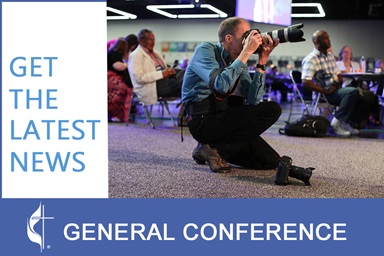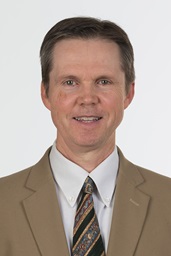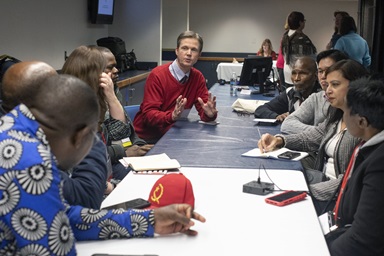When Elsa Stamatopoulou started her work at the United Nations in 1980, United Methodists were among the leading faith-based partners collaborating to create standards and monitoring tools for human rights issues.
Stamatopoulou was part of a March 24 panel presentation, "The Founding Pillars of the United Nations — Peace and Security, Human Rights and Development," to the denomination’s Board of Church and Society. A native of Greece and 31-year U.N. veteran, she was both educating and thanking board directors.
She referred to the Church Center for the United Nations, the United Methodist-owned building where the board’s directors were meeting, as the “parliament” of civil society, where ideas are crafted and taken to the U.N. conference rooms and assembly halls across the street.
For United Methodists, the connections run deep.
a place for the people
Dedicated on Sept. 23, 1963, the Church Center for the United Nations was a place where faith communities and nongovernmental organizations working for human rights, development and peace could have access to the U.N.
Over the decades, United Methodist Women and its administrative arm (until 2012), the Women’s Division, Board of Global Ministries, and the Board of Church and Society and their other predecessor bodies together have overseen the church’s ministry at the CCUN. Financially, the women eventually bought out Church and Society to streamline ownership responsibilities.
The Rev. Susan Henry-Crowe, top executive of Church and Society, recalled her first visit to the United Nations in 1967 as a 16-year-old. “Seeing King Hussein of Jordan walk into the U.N. immediately following the Six-Day War (in the Middle East) changed my world view,” she said during a report to directors. “The church gave to me the vision of what a global Christian and citizen might look like.”
Advancing that vision is part of the job for the Rev. Liberato “Levi” Bautista, who has long headed Church and Society’s office at the CCUN. He has served as the agency’s main representative to the United Nations since 1996.
Harriett Olson, top executive of United Methodist Women, which now owns the building at 777 U.N. Plaza, shared a snapshot of the CCUN’s impact as host and facilitator to the many segments of civil society that engage the United Nations on a regular basis.
“We’re facilitating conversations, we’re making space,” she said. “The work of hospitality is the work of this building.”
A long-time CCUN tenant, Joseph Donnelly, permanent delegate to the U.N. for Caritas International, called the building the non-governmental address for those “representing the world.” Even for those not tied to a religious group, faith — of one type or another — often is present. “You can’t be in this building too long and not do a little bit of praying,” he said.
Another United Methodist is a more recent newcomer to the United Nations. Nikki Haley, the U.S. Ambassador to the U.N. and the former governor of South Carolina, was invited by Henry-Crowe to visit with board directors. Haley’s office said she was traveling that day, but thanked Henry-Crowe for the invitation.
As part of the Church and Society meeting, directors from the U.S. who chose to do so did write personal letters to Haley, while directors living outside the U.S. wrote the ambassadors of the Philippines, Norway, Germany and Angola. The letters asked the diplomats to fully support a new set of 17 Sustainable Development Goals negotiated through the United Nations. The idea is to end poverty, protect the planet and ensure prosperity for all.
What makes the goals meaningful is the fact that those negotiations included not just the 193 member states, but thousands of interest groups “pressuring and participating” in the process, said Thomas Gass, a Swiss diplomat who now serves as a U.N. assistant secretary-general. More than 5 million individuals were interviewed about their vision of sustainable development, he added.
“I like to say that civil society pressed open the doors of the United Nations and released the emotional intelligence of this organization, an emotional intelligence that is very much rooted in human rights,” he told the Church and Society directors.
new look at development goals
To Thomas Gass, an assistant secretary-general at the United Nations, the Sustainable Development Goals adopted in 2015 represent three shifts in development thinking.
The first shift is an acknowledgement of the world’s interdependence. “Just take off your clothes in the evening and look at where they were made,” Gass told directors of the United Methodist Board of Church and Society. “And think about who made them, under what kind of conditions and what were the social rights of that person…”
The second shift is moving the idea of accountability from accountability to the state to accountability to the people.
The third shift, which Gass said he knows is appealing to Christians, is making the commitment to leave no one behind.
“Leaving no one behind is absolutely revolutionary in development because it has always been about optimization of resources,” he explained. “And that invariably leaves people behind.”
If civil society uses the Sustainable Development Goals as a social contract between the state and the people and makes them part of the local dialogue, the goals can be a powerful tool, he said.
It’s the combination of peace and security, human rights and development that is essential.
When the 1945 U.N. charter mentioned human rights — and “created a revolution” in international affairs — it made people into subjects under international law, said Stamatopoulou, currently an adjunct professor at Columbia University and director of the Indigenous Peoples' Rights Program at the Institute for the Study of Human Rights there.
Since then, about 100 international human rights instruments have been developed, along with strong monitoring mechanisms.
But raising awareness of human rights is just as important and Stamatopoulou is convinced that the major role civil society can play today “is to continue implementing human rights at community levels, keeping alive the human rights language.”
Peacebuilding also is key, as Rima Salah learned during a long career with UNICEF as an advocate for women and children caught up in conflict — work that took her to many different countries.
“There can be no sustainable development without peace and no peace without sustainable development,” she said.
In the beginning, the U.N. involvement in peacekeeping was limited to maintaining ceasefires and stabilizing situation on the ground, which Salah witnessed herself as a young girl growing up in Jerusalem.
Later, the U.N.’s peacemaking efforts addressed people’s needs and eventually focused on human rights and development.
But the positive recent trend toward peace has suffered a reversal. “Today, millions of families find themselves trapped in the middle of violent conflicts that disrupt the fabric of society and compromise the very foundation of their institutions,” Salah said. Salah declared that the impact of that violence “is tremendous and should not be tolerated.”
She called the adoption of the 2030 agenda of the Sustainable Development Goals one of the “triumphs” in the advancement of peace and security ideals within the last two years.
“Groundbreaking” resolutions adopted by the U.N. in April 2016 also represent a shift from peacebuilding to sustaining peace, based on a report from a high-level panel appointed by then-U.N. Secretary-General Ban Ki-moon.
Salah, a member of the panel, said their report, “Uniting Our Strength for Peace,” focuses on four core areas: prevention of conflict, mediation, protection of civilians and sustaining peace.
Bloom is the assistant news editor for United Methodist News Service and is based in New York. Follow her at https://twitter.com/umcscribe or contact her at 615-742-5470 or [email protected]. To read more United Methodist news, subscribe to the free Daily or Weekly Digests.
Like what you're reading? Support the ministry of UM News! Your support ensures the latest denominational news, dynamic stories and informative articles will continue to connect our global community. Make a tax-deductible donation at ResourceUMC.org/GiveUMCom.






